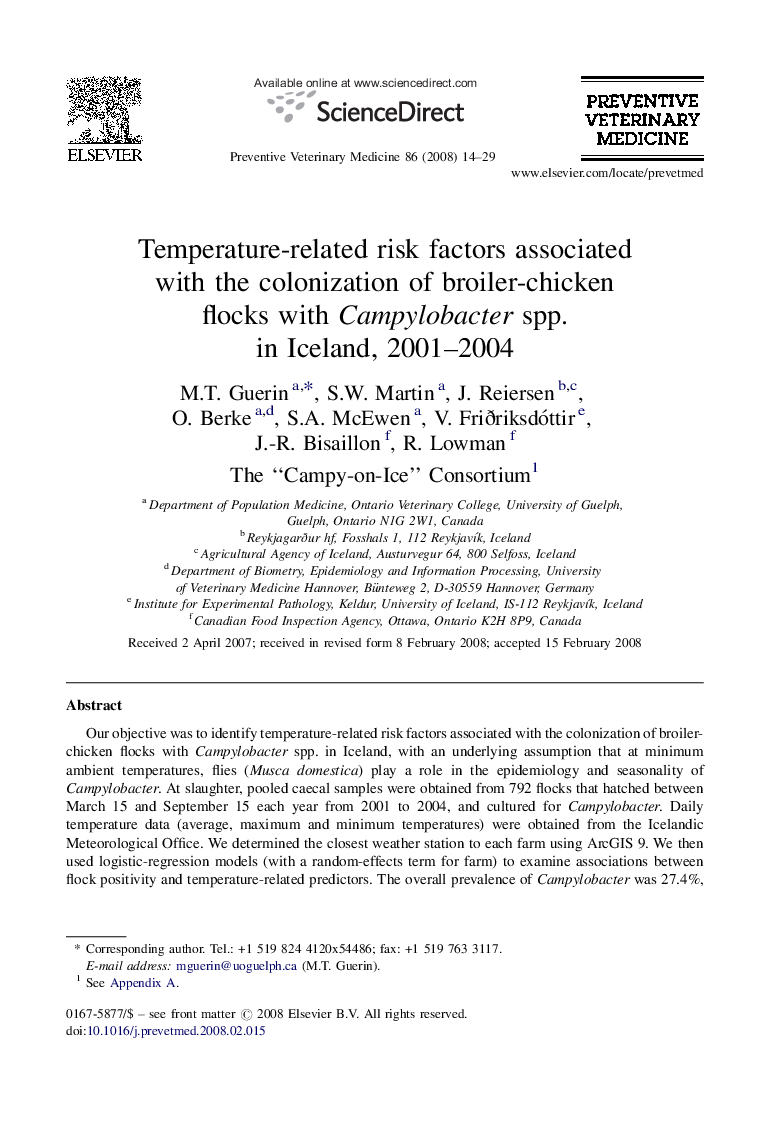| کد مقاله | کد نشریه | سال انتشار | مقاله انگلیسی | نسخه تمام متن |
|---|---|---|---|---|
| 2453217 | 1554215 | 2008 | 16 صفحه PDF | دانلود رایگان |

Our objective was to identify temperature-related risk factors associated with the colonization of broiler-chicken flocks with Campylobacter spp. in Iceland, with an underlying assumption that at minimum ambient temperatures, flies (Musca domestica) play a role in the epidemiology and seasonality of Campylobacter. At slaughter, pooled caecal samples were obtained from 792 flocks that hatched between March 15 and September 15 each year from 2001 to 2004, and cultured for Campylobacter. Daily temperature data (average, maximum and minimum temperatures) were obtained from the Icelandic Meteorological Office. We determined the closest weather station to each farm using ArcGIS 9. We then used logistic-regression models (with a random-effects term for farm) to examine associations between flock positivity and temperature-related predictors. The overall prevalence of Campylobacter was 27.4%, and the month with the highest prevalence (54.4%) was August. The final model included cumulative degree-days (CDD) above an average temperature of 4.4 °C and the presence of 1 or more days below a maximum temperature of 8.9 °C (threshold below which fly activity was expected to be substantially reduced and egg laying was not expected to occur) during the period 2–4 weeks (i.e. days 8–28) before slaughter. Below 79 CDD, the risk of flock Campylobacter colonization was generally low. Between 79 and 139 CDD, the risk increased gradually, but was lower for flocks raised during periods with 1 or more days <8.9 °C than flocks raised without days <8.9 °C. The risk increased sharply under conditions of high CDD (>139) and when the maximum temperature remained >8.9 °C during the period 2–4 weeks before slaughter.
Journal: Preventive Veterinary Medicine - Volume 86, Issues 1–2, 15 August 2008, Pages 14–29